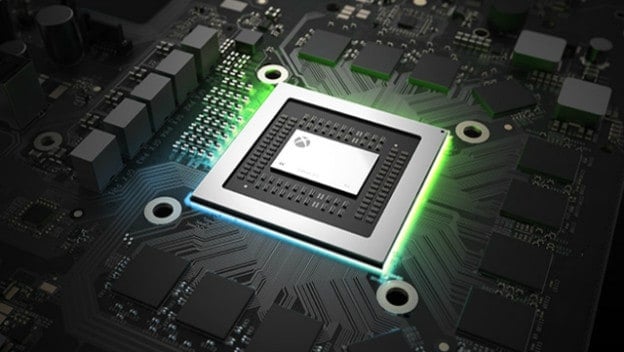4K gaming sounds cool and all, but with it comes a host of problems a lot of people aren’t ready for yet. Things like bandwidth, storage, and technology are all a bunch of logistical problems that place a lot of burden on the consumer’s wallet. Some may argue that it’s too soon to push 4K as hard as it is, but it’s happening either way. Recently, Digital Foundry reported on a system supposedly in place in the Xbox One ecosystem that will be showing up sometime around the Xbox One X launch. It’s called Intelligent Delivery, and it could very well be the first in a series of answers video game companies have to ease that burden a bit.
A while back, there was a bit of internet gaming drama when Square Enix accidentally sent out the wrong specs for the PC version of Final Fantasy XV in a press release. Not only were the recommended specifications insane from a power perspective, but one detail in particular made several headlines. Square Enix apparently had the game sized at around 170 GB, which is absolutely insane. Now, this ended up not being true; the specs were for the demo stations the company had set up at Gamescom, and the storage number just seemed to outright be misinformation. Regardless, the PR snafu ended up being useful.
While Final Fantasy XV won’t end up being the most expensive port in history, the story did end up really highlighting peoples’ fears when it comes to 4K. That especially holds true with the storage space part. In comparison, only a few games today go over 50GB, and only a couple, including DOOM and Gears of War 4 , have approached even 100GB. For many people, these kinds of numbers are ridiculous for a single game, let alone some kind of precedent for the next standard. For some people, it would be impossible.
People right now still have to deal with data caps, limited console storage, and even internet connections that simply aren’t fast enough to justify playing games of that size. America doesn’t even have 100% high-speed Internet penetration; gamers exist in rural areas that struggle to get DSL connections. And even companies that do serve high speed internet often have their providers enforcing data caps for all but the highest-paying customers, limiting people to ridiculous numbers like 300GB a month, then charging huge when that limit is inevitably reached.
Intelligent Delivery, of which Digital Foundry got a hold of development documents for, seems to be the first major attempt at an internal solution for the 4K games industry. Intelligent Delivery is a system designed in mind of supporting multiple console tiers, as the Xbox One X and S are meant to coexist. Intelligent Delivery separates game data into “chunks,” and those chunks are the key to helping gamers enjoy their stuff without worrying as much as they do now.

The data chunks can be tagged by the game’s developers, and with these chunks and tags, a lot can be meddled with in terms of how a game is downloaded. It is within the capabilities of the Intelligent Delivery structure to make chunks optional for the players; for example, a stage editor or single-player campaign can technically be deemed optional. In theory, one could get DOOM and download only the campaign, therefore all the multiplayer data that bumps the game up to over 70GB can be ignored by those uninterested in ever using it. Other examples are things like language packs, which take up tons of space in games like FIFA , and the dreaded 4K assets that can and will soak up tons of digital real estate.
Likely, the most common tag will be exactly that. If a user is on an Xbox One S, the download will detect as much and not download those 4K assets. Thus, eliminating the concern many have about games needing extra space for features they can’t even use yet. Will intelligent Delivery be the magic bullet that solves all the 4K issues? Probably not. It sounds like a lot of this stuff is optional, and many developers may not bother to go that far in-depth. It could also be difficult to implement in certain games with different modes, depending on how the game in question is built. But at the very least, the ability to separate the 4K assets for non-4K users sounds like a great first step.
